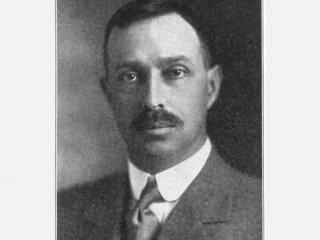
Roland B. Dixon biography
Date of birth : 1875-11-06
Date of death : 1934-12-19
Birthplace : Worcester, Massachusetts
Nationality : American
Category : Arhitecture and Engineering
Last modified : 2010-10-14
Credited as : Anthropologist, studies of native tribes in America and Oceania,
0 votes so far
Life
Roland Burrage Dixon was born on November 6, 1875, in Worcester, Massachusetts, to the family of Louis Seaver Dixon and Ellen Burrage. He studied first at Hopkinson School and then Harvard, graduating in 1897.
Upon graduation he was appointed an assistant in anthropology at the Peabody Museum, participating in a field study and excavations of burial mounds in Madisonville, Ohio. After obtaining his master’s degree in 1898, he joined the American Museum of Natural History staff, with whom he participated in the Jesup North Pacific Expedition and the Huntington Expedition to California. In 1899, he started his study of Native American Indians in California, with which he earned his Ph.D. in 1900. His thesis, on the language of California’s Maidu Indians, was later published in Franz Boas’ Handbook of American Indian Languages.
In 1902, Dixon became a member of the faculty at Harvard University, serving as an assistant professor of anthropology from 1906 to 1915, and a full-time professor from 1915. At the same time he served as librarian at Peabody Museum (1904–1934), as secretary (1909–1934), and as curator of ethnology (1912–1934). During his directorship, the library grew to one of the most comprehensive anthropological libraries in the country.
Dixon conducted numerous expeditions and field studies. Besides his expeditions in the United States and Mexico, Dixon performed numerous cultural studies in New Zealand, Australia, Himalayas, Malaysia, Philippines, and Japan. His first major publication, Oceanic Mythology (1916), was among the first to describe cultures of Oceania. It became an important sourcebook for all subsequent studies of Polynesia.
In 1928, Dixon published his best known work, The Building of Cultures. He discussed the issues of cultural diffusion and the influence of environment on cultural traits. By noticing similarities in cultural traits around the world, Dixon wanted to trace migration of people and ideas, as they spread across the globe. In his other publications Dixon addressed linguistics, primitive art, folklore, and religion.
Besides ethnographical work, Dixon was interested in politics. In 1918, he became a member of the House Commission, which collected reports on the political conditions in Central Asia. Dixon spent several years with the commission, negotiating peace in Asia. However, he remained faithful to research and teaching, and died in 1934, just a few hours after giving a lecture at Harvard.
Work
Dixon studied the migration of peoples through the diffusion of ideas, as evidenced in various material objects. In his book, The Building of Cultures, he presented his study of numerous objects, found in various cultures around the world, which had certain similar traits. Through those similarities, Dixon was able to determine how certain ideas spread around the globe.
He applied the same idea in his book, The Racial History of Mankind, to the migration of peoples and races. Through tracing several physical traits throughout the world, Dixon made a map of racial migrations of early hominids. Although his technique was met with some criticism, he was able to show, by using scientific data, that Native American Indians are of Mongolian origin. In his work, Dixon was the first anthropologist to follow three different anthropometrical traits at once, unlike others who charted racial history by following only one single trait.
Dixon also remains known for his ethnographical work among California Indians and in Oceania. His 1905 book, Northern Maidu, was one of the first modern works on any native people of California. Although he was not trained in philology, Dixon studied their language and was able to correctly grasp its fundamental features with utmost precision. He published more than twenty other papers on California peoples in the period from 1915 to 1928.
Dixon’s studies of the peoples of Oceania are among the most detailed in existence, always approaching the issues from numerous angles. His knowledge of geography, history, folklore, archaeology, and linguistics was vast, enabling him to understand the peoples of Oceania better than any contemporary anthropologist. These studies Dixon published on Oceania continued to be used as source material long after his death.
Legacy
Roland Dixon remains famous for his contribution to the development of Harvard’s anthropological department, which, under his guidance became the leading center for the training of anthropologists in the United States. Dixon organized Harvard’s anthropological library, making it one of the world’s most comprehensive and functional anthropological libraries in the world.
His studies on Oceania’s cultures were pioneering, and have served as important sources of information for all subsequent cultural studies of the region. His work on California Native American Indians remains among the most fundamental in the area.
Dixon’s personality prevented him from becoming a famous scholar or attracting any greater number of followers. He was a rather withdrawn and introverted man, who preferred solitude and rarely made social contacts. For that reason he did not have many supporters, and many of his ideas were slowly pushed aside or disregarded by later anthropologists.
















